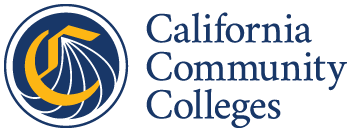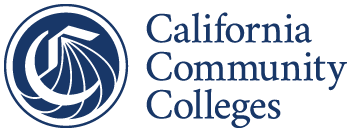Strong Workforce Program: More and Better Career Technical Education to Increase Social Mobility and Fuel Regional Economies with Skilled Workers
To develop more workforce opportunity and lift low-wage workers into living-wage jobs, California took a bold step in 2016 to create one million more middle-skill workers. At the recommendation of the California Community College Board of Governors, the Governor and Legislature approved the Strong Workforce Program, adding a new annual recurring investment of $290 million to spur career technical education (CTE) in the nation’s largest workforce development system of 116 colleges.
Grouped into seven areas targeting student success, career pathways, workforce data and outcomes, curriculum, CTE faculty, regional coordination and funding, this leading-edge state economic development program is driven by “more and better” CTE. The “more” is increasing the number of students enrolled in programs leading to high-demand, high-wage jobs. The “better” is improving program quality, as evidenced by more students completing or transferring programs, getting employed or improving their earnings.
The Strong Workforce Program focuses on data-driven outcomes rather than activities, along with an emphasis on innovation and risk-taking. In this way, colleges can be more responsive to labor market conditions and student outcomes. CTE Data Unlocked, a component of the program, helps colleges use CTE data to strengthen regional workforce plans by furthering local processes like program review, accreditation, and integrated planning.
This new ongoing funding is structured as a 60 percent Local Share allocation for each community college district and a 40 percent Regional Share determined by a regional consortia of colleges to focus on the state’s seven macro-economic regions. Both the Local and Regional Share require local stakeholders to collaborate, including industry and local workforce development boards. As much as possible, this program builds upon existing regional partnerships formed in conjunction with the federal Workforce Innovation and Opportunity Act, state Adult Education Block Grant and public school CTE programs.
Resource Center
- Bay Area Community College Consortium
- Central Valley Mother Lode Consortium
- Inland Empire/Desert Regional Consortium
- Los Angeles Regional Consortium
- North Far North Regional Consortium
- Orange County Regional Consortium
- San Diego and Imperial Regional Consortium
- South Central Coast Regional Consortium
SWP 2.0 (2022-23) Allocation
Expenditure Timeline : 24 Months July 1, 2022 - June 30, 2024
| REPORT | REPORTING PERIOD | DUE DATE | REPORTING DUE (NOTES) |
|---|---|---|---|
|
1 |
July 2022 to December 2022 | February 15,2023 | Quarter 2 |
| 2 | January 2023 to June 2023 | November 15,2023 | Quarter 4 |
| 3 | July 2023 to December 2023 | February 15,2024 | Quarter 2 |
| 4 | January 2024 to June 2024 | November 15,2024 | Quarter 4/Final Report |
SWP 2.0 (2023-24) Allocation
Expenditure Timeline : 24 Months July 1, 2023 - June 30, 2025
| REPORT | REPORTING PERIOD | DUE DATE | REPORTING DUE (NOTES) |
|---|---|---|---|
| 1 | July 2023 to December 2023 | February 15,2024 | Quarter 2 |
| 2 | January 2024 to June 2024 | August 15,2024 | Quarter 4 |
| 3 | July 2024 to December 2024 | February 15,2025 | Quarter 2 |
| 4 | January 2025 to June 2025 | August 15,2025 | Quarter 4/Final Report |
SWP 2.0 (2024-25) Allocation
Expenditure Timeline: 24 months July 1, 2024 - June 30, 2026
| Report | Reporting Period | Due Date | Reporting Due (Notes) |
|---|---|---|---|
| 1 | July 2024 to December 2024 | February 15, 2025 | Quarter 2 |
| 2 | January 2025 to June 2025 | August 15, 2025 | Quarter 4 |
| 3 | July 2025 to December 2025 | February 15, 2026 | Quarter 2 |
| 4 | January 2026 to June 2026 | August 15, 2026 | Quarter 4/Final Report |
SWP 2.0 (2025-26) Allocation
Expenditure Timeline: 24 Months July 1, 2025 - June 30, 2027
| Report | Reporting Period | Due Date | Reporting Due Dates/Notes |
|---|---|---|---|
| 1 | July 2025 to December 2025 | February 15, 2026 | Quarter 2 |
| 2 | January 2026 to June 2026 | August 15, 2026 | Quarter 4 |
| 3 | July 2026 to December 2026 | February 15, 2027 | Quarter 2 |
| 4 | January 2027 to June 2027 | August 15, 2027 | Quarter 4/Final Report |
Planning Guide
- Local and Regional Planning Guide
- Vision Resource Center
- Memorandum
Nova Reporting System
Funding Implementation - Local Shares
Funding Implementation - Regional Shares
| NAME | TITLE | PHONE NUMBER |
|---|---|---|
| Erin Larson | Dean | 916.327.0067 |
| Javier Cazares | Specialist | 916.327.5907 |
| Zitlali Torres | Program Assistant II | 916.327.5692 |
| Steve Nguyen | Associate Program Analyst | 916.327.6626 |

